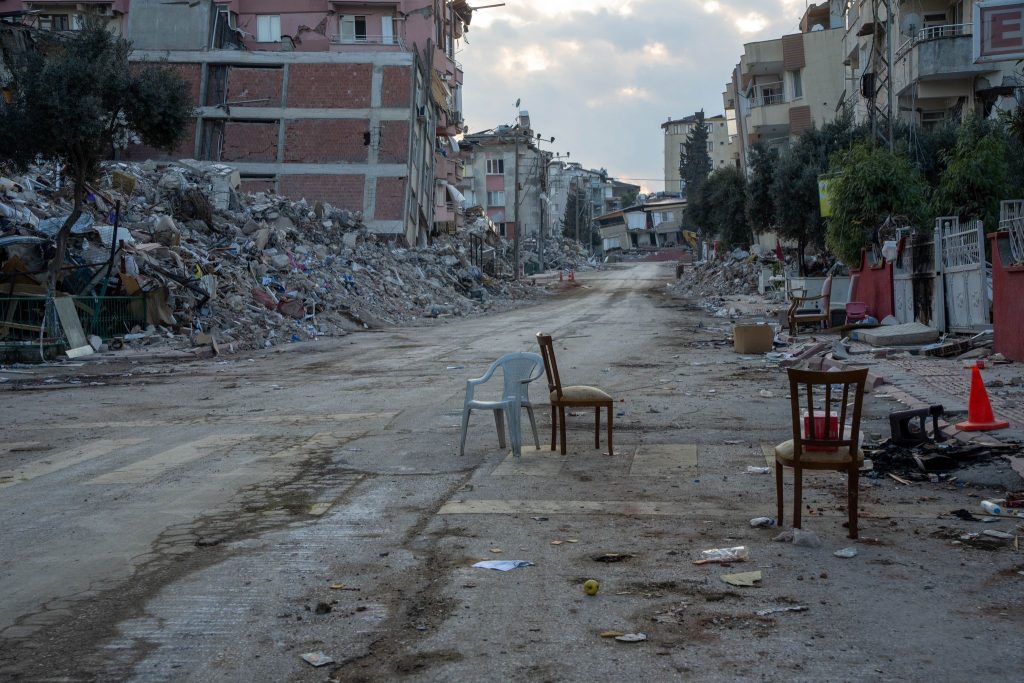When you see the path of a wildfire, it’s always a bit mysterious why some places are obliterated while others remain untouched. It’s like that in Antakya, Turkey, the city hardest hit by the devastating February 6 earthquake. Sometimes, whole city blocks are destroyed. On other streets, only a single building or two has collapsed while the rest remain cracked but standing. But the city, which has been continuously inhabited since Roman times and was one of the early centers of Christianity, is now largely erased.
When the buildings fell, the destruction was total. Often, what remains is just a pile of broken concrete and twisted rebar. Occasionally a child’s toy, some family photos, or stray bits of clothing poke out of the rubble, but mostly it is hard to imagine life there at all. In rare cases, a single room is nearly intact, sitting awkwardly on top of the ruins. In one, a neatly packed dish-drying rack, the dishes unbroken. In another, a TV and a wall of family photos, the rest of the room utter ruin.
The destroyed old city of Antakya. On February 6, 2023, a 7.8 magnitude earthquake hit central and southern Turkey, and Northern Syria. It was followed by a 7.7 magnitude earthquake. It is estimated that there were 45,000 deaths in Turkey, and approximately 7,000 in Syria.

A layer of fine dust hangs in the air, sometimes mixing with the smell of corpses as diggers overturn slabs of concrete. Some neighborhoods are entirely silent, save for stray animals wandering the ruins. A dog, seemingly half insane, searches frantically for its owner. Other blocks are almost agonizingly loud, as the metal treads of giant construction machines scrape and squeal over the rubble.
In the first days, families kept vigil, sitting on a motley assortment of salvaged chairs. In certain rare miracles, they witnessed their loved ones being saved, but mostly they just waited for their bodies.
As dusk fell, a group of Turkish rescue workers found a wallet belonging to a sister of the Çelik family. A woman called Senem rushed forward and grasped it to her breast, then started yanking things out and tossing them to the ground as she ran crying into the waiting arms of her loved ones. A rescue worker carefully picked up the discarded money and handed it quietly to her relatives.
Scattered around the sites of collapsed buildings are chairs where family members keep vigil waiting for rescue workers to discover the remains of loved ones, or in rare cases, find them alive.
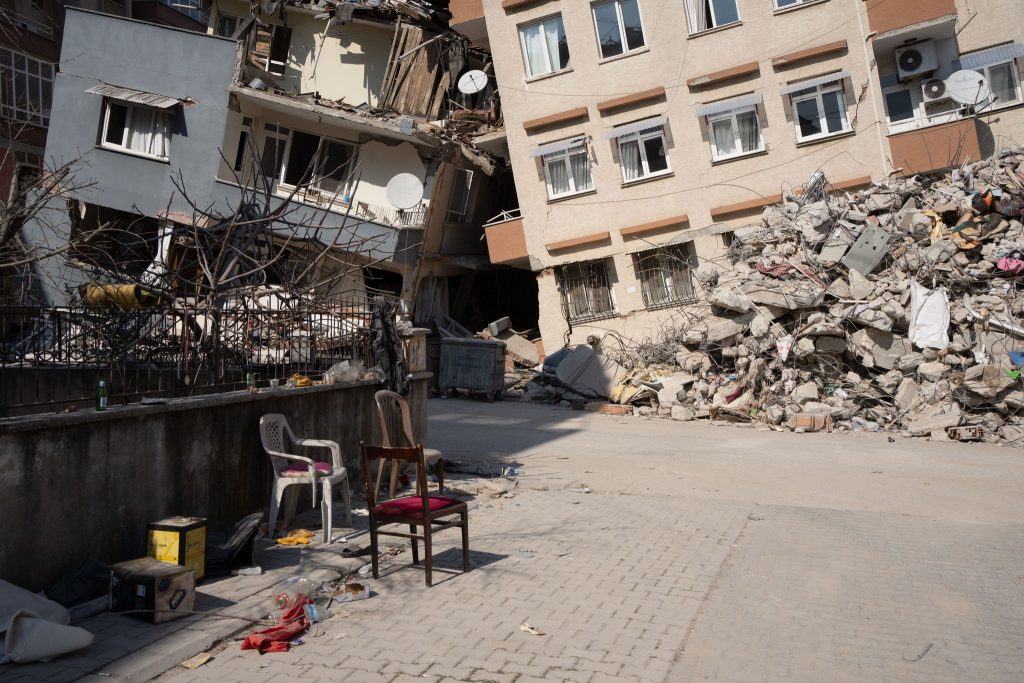
I’ve documented a number of massive natural and man-made catastrophes. When I arrived in Thailand after the 2004 Tsunami there were dead tourists in the thousands laid out on the floor of a temple grounds, stacked with dry ice in a feeble attempt to keep off the decay. In Haiti, in 2010, I was on an aid convoy following the earthquake which found itself, through poor planning and chaotic circumstances, unable to deliver badly needed supplies. Crowds of hungry people trotted after the vehicles begging for help.
I’ve never become accustomed to the site of horrible things, but over time a certain familiarity blunts some of the surface edges. Yet the scale of the earthquake in Turkey and Syria is so vast that no experience could prepare me for what I saw.
As the days pass, it has become increasingly clear that widespread corruption and lack of accountability led to criminally shoddy building standards in the rapidly growing cities. And for some buildings, the quake was simply too powerful.
A rescue worker removes debris from a collapsed apartment block. The rescue workers suspect someone might still be alive in the building, but an hour-long rescue proves fruitless.
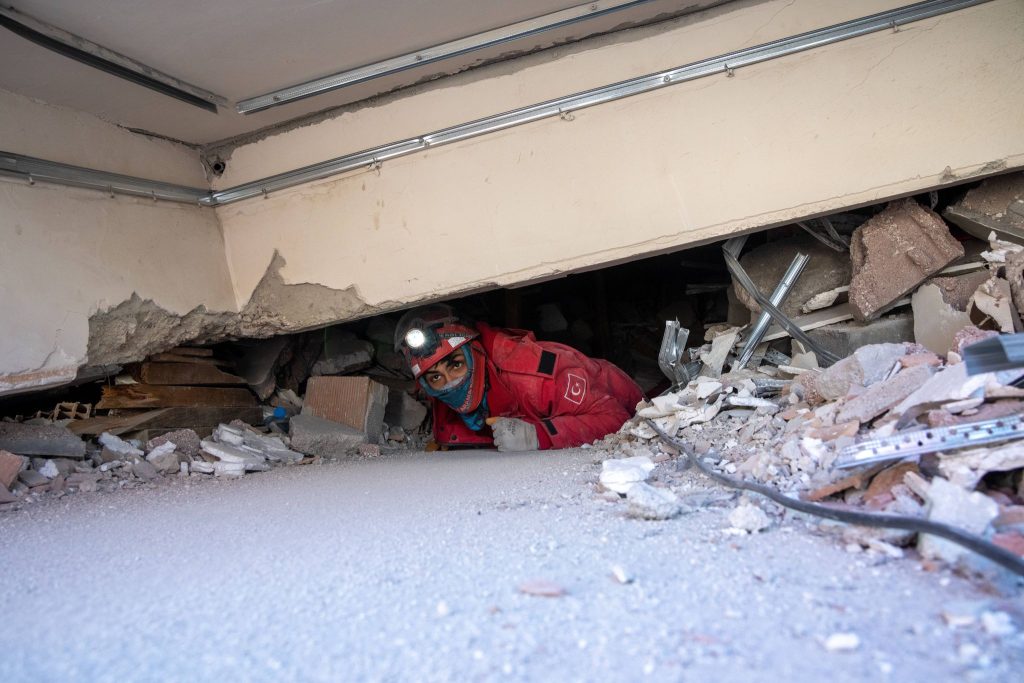
There were many complaints about the slow response from the government in the initial days, when the population had to do their best to dig their loved ones out of the rubble with their bare hands. A week in, rescue workers are everywhere while the military patrols the streets. Mechanical diggers search for bodies, but their main task is to clear away the destruction.
Antakya is the worst hit, but you can drive for many hours in any direction and follow the path of destruction. In the town of Yaylakonak, deep in the mountains outside Adiyamin and five hours from Antakya, nearly the whole village has collapsed. 170 houses gone and 108 people dead, almost ten percent of the population. As I walked around, I saw two women, seemingly a mother and her daughter, who needed help folding a damaged, water-logged rug. The older woman told me, “My grandma made it. It’s one of the only things we managed to pull from our house.”
Miners wait to be called to dig into the ruins to search for the bodies.
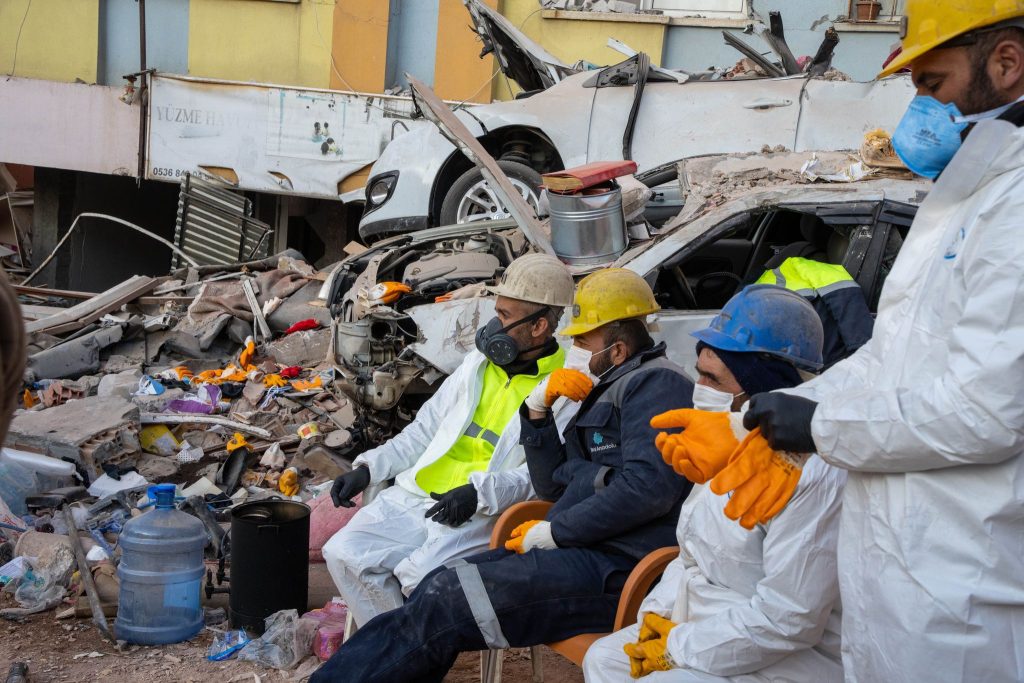
The people in the earthquake zone will face years of instability and uncertainty. Disease is already breaking out, and the faces of the adults grow increasingly haggard. The children, remarkably, still play. Bursts of emotion are unpredictable when you have a job to focus on, despite the horrors. My deepest pang came, as it often does, without warning. In a Syrian tent city, jury-rigged together in a park in Kahramanmaras. Boys lay on the earth with their heads together, digging and chatting quietly while other kids went down a slide. The background a sea of tents, and beyond that, just out of sight, collapsed apartments. I remembered a long-unconsidered memory of digging in the side of a hill by a baseball diamond during recess from elementary school. I suppose it would have looked just like that. I imagined the bodies of children being limply carried out of the rubble. We went to a graveyard afterwards. A Turkish colleague went to talk to some forensic workers, and I followed behind. As he crested the hill, he stopped and looked back in horror. “No one should see this.”
I wondered how many anonymous children were now buried in hastily dug graves, like the one I saw in a small village. Up a hill from a great tear in the earth, two colorful children’s jackets lay on freshly dug earth, weighted down by rocks to keep them from blowing away.
In Turkey, civilians drive through the destroyed old city of Antakya.

A central distribution hub for food and humanitarian aid in the largely Kurdish town of Adiyamin. Unlike in the majority Turkish Antakya, signs of government aid were much less present here.
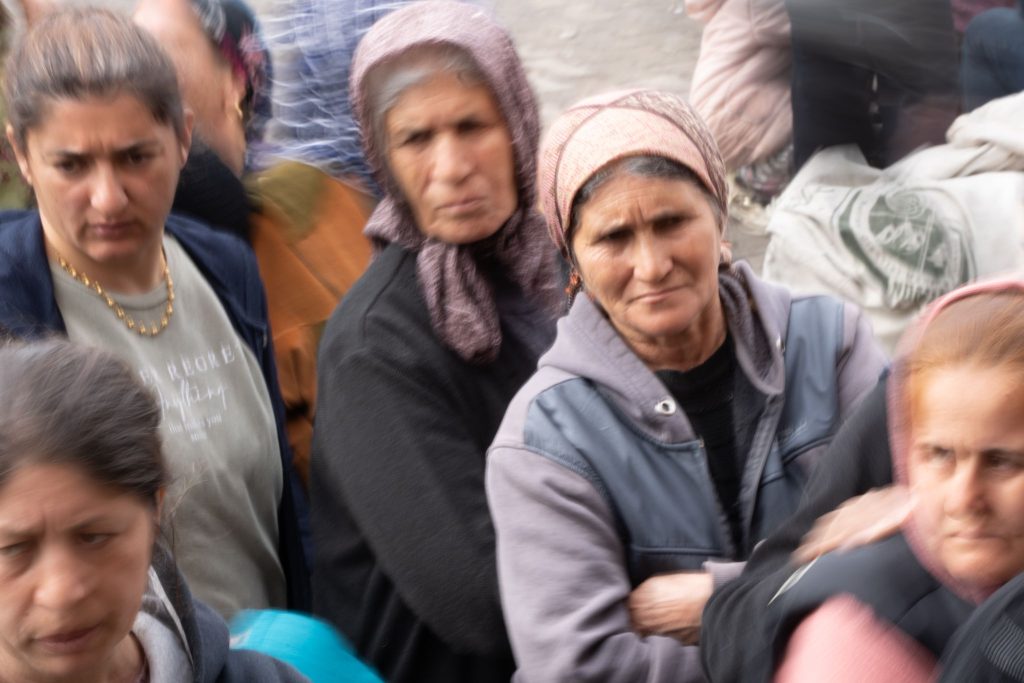
Civilians wait to be allocated tarpaulins in Adiyamin.
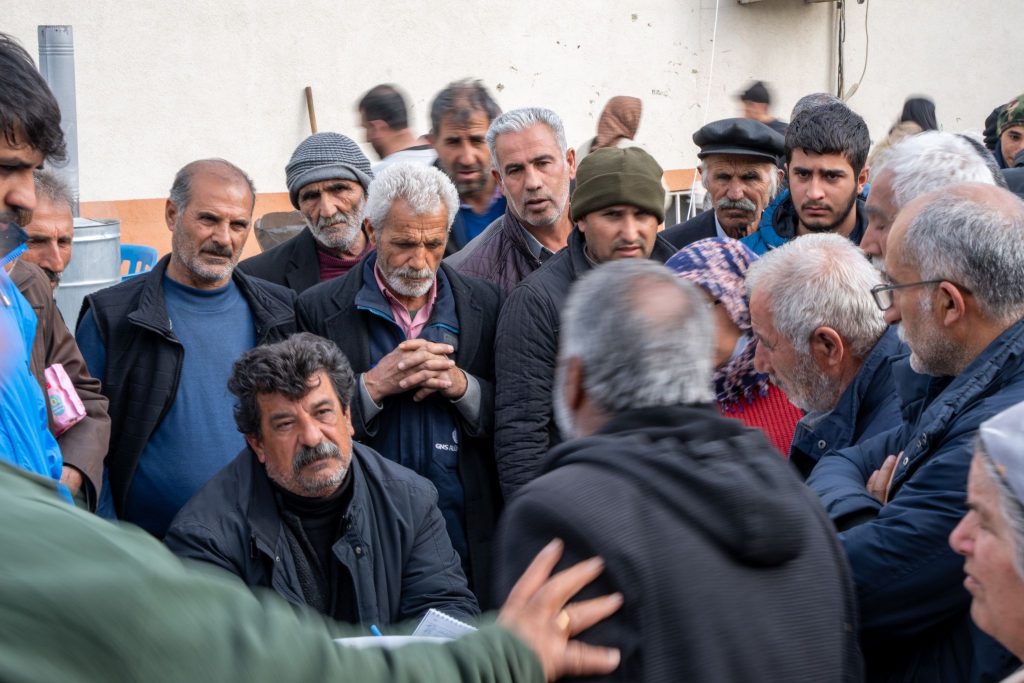
Family photos in the rubble of a collapsed apartment building.
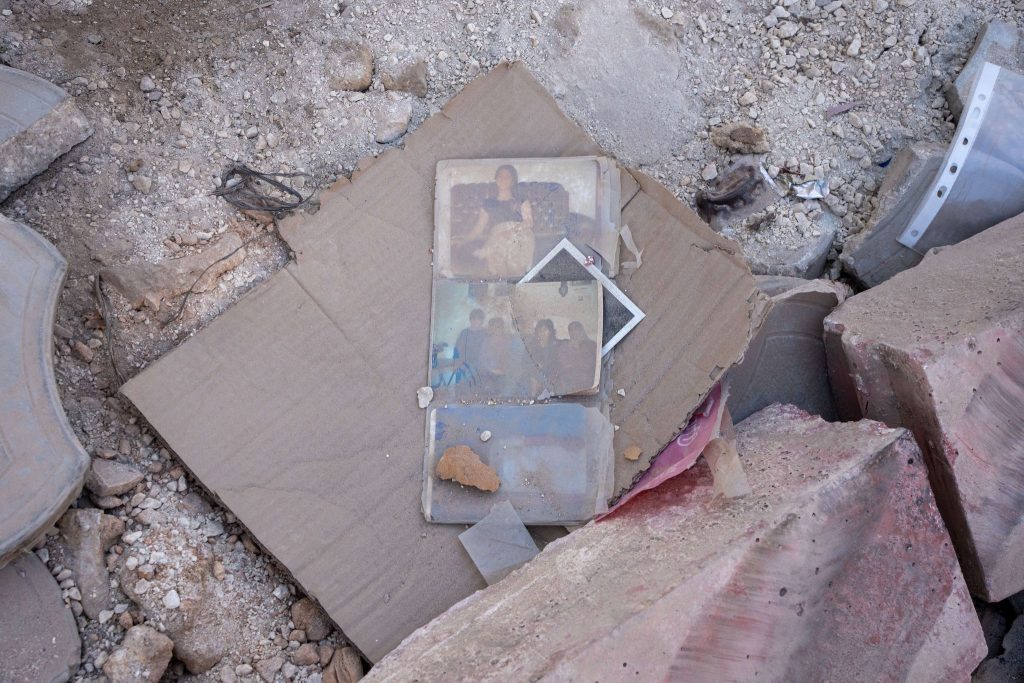
Grieving at the cemetery outside Adiyamin, where several sections have been hastily dug to bury the more than 3,000 people killed.

Grief flows through the cemetery in Adiyamin.
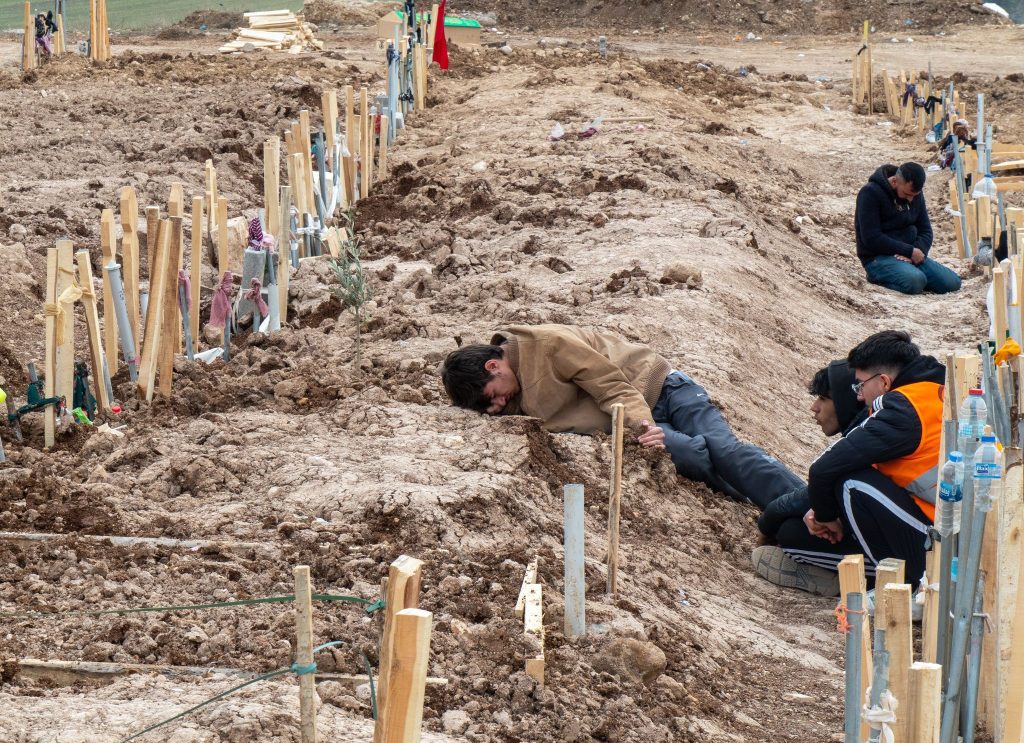
Destruction in Yaylakonak.
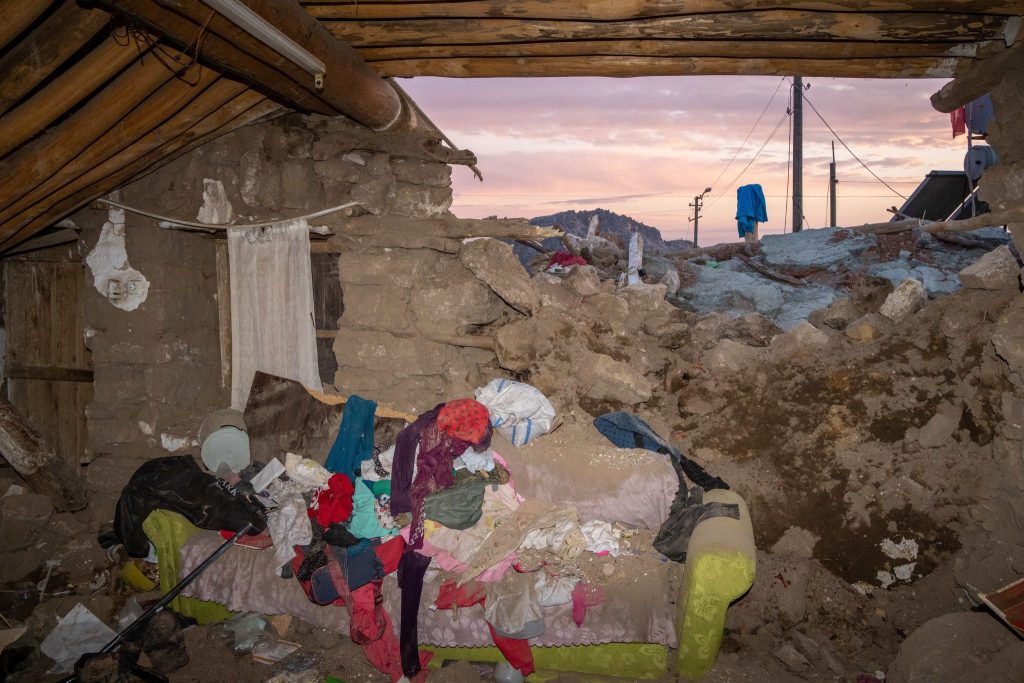
The destroyed old city of Antakya.

Rescue workers in Turkey search for bodies in the rubble of a collapsed apartment building.
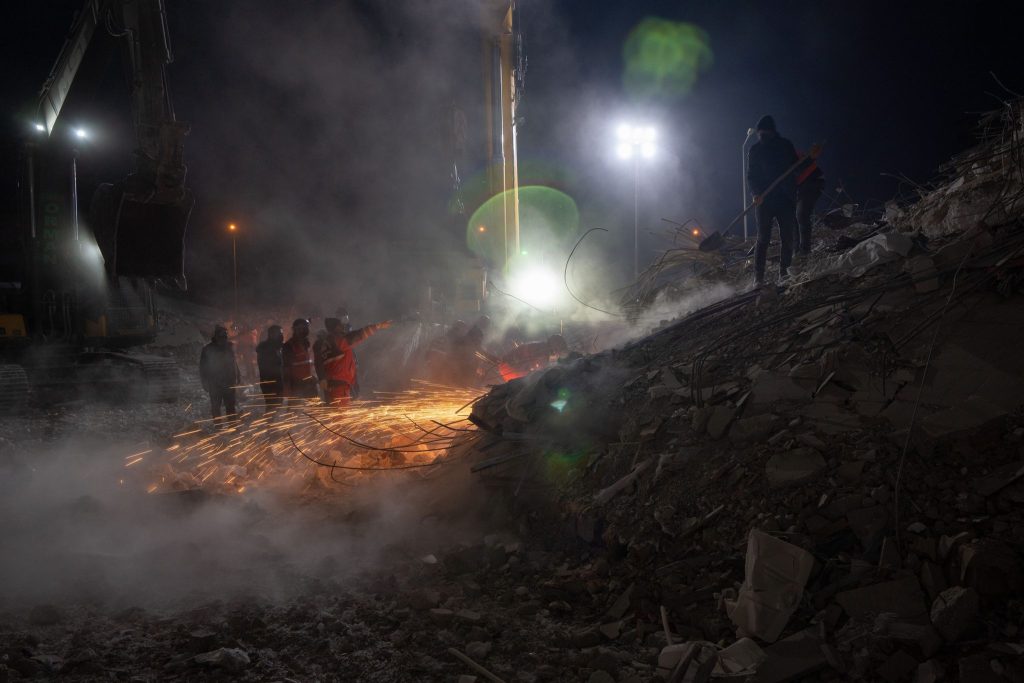
Mechanical diggers lift rubble searching for bodies as rescue workers and family members look on.

A man secures his belongings salvaged from his half-collapsed apartment block.

In a tent city for displaced victims of the earthquake in a municipal park, children play amidst their new reality.
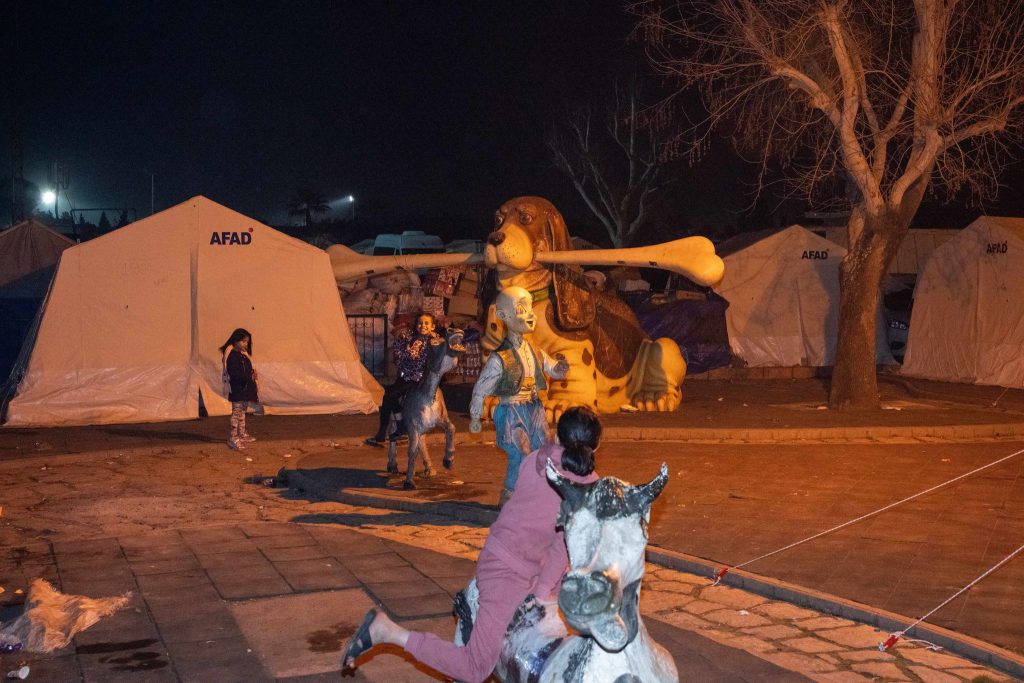
Looking at the destruction of Antakya.
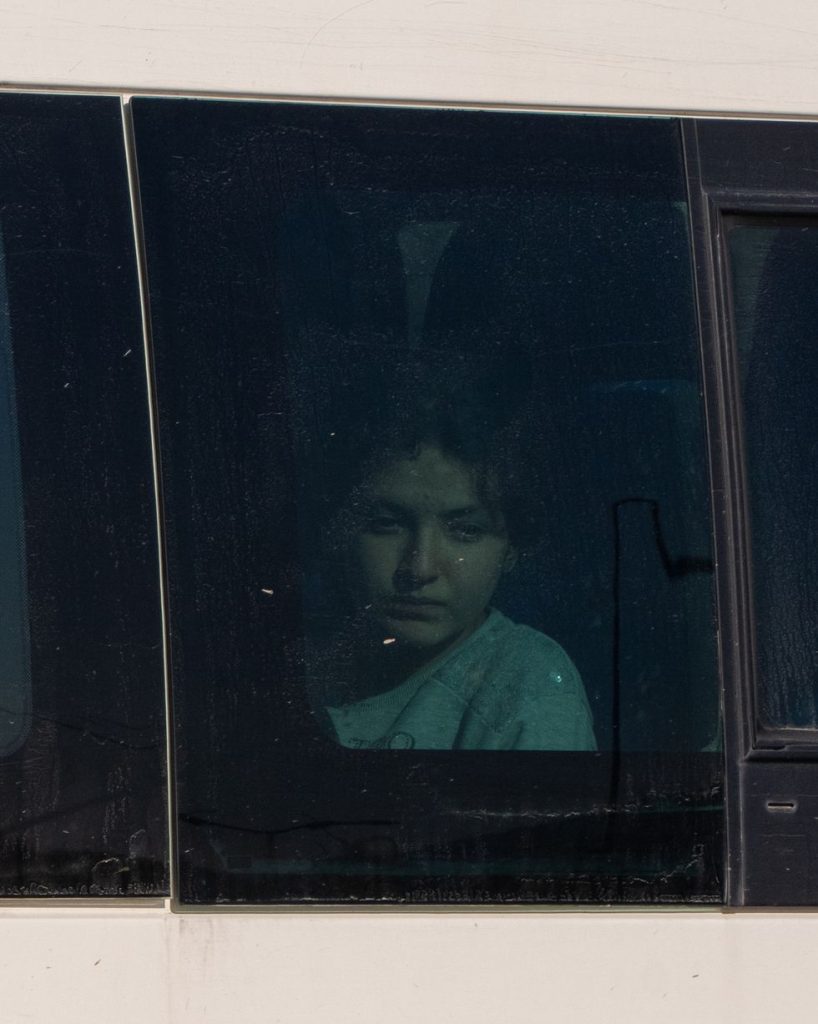
More scattered chairs for those who wait for news.
